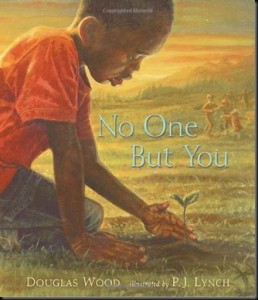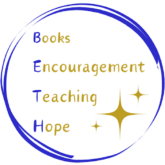 For the next few weeks, I’ll be reprising a few posts from the archives. I hope you’ll enjoy revisiting these posts, as I have. This was originally shared as a Perfect Picture Book post on October 26, 2012.
For the next few weeks, I’ll be reprising a few posts from the archives. I hope you’ll enjoy revisiting these posts, as I have. This was originally shared as a Perfect Picture Book post on October 26, 2012.
This lovely book explores the way each of us sees things differently. We are both the same and unique at once, and that itself is something to celebrate!
Title: No One But You
Author: Douglas Wood
Illustrator: P.J. Lynch
Publisher: Somerville, MA: Candlewick Press, 2011
Genre: Picture book
Audience Age: 4 to 9 years old
Themes and topics: nature, individuality, uniqueness
Opening Sentences: There are so many things in the world, so many important things to be taught, to be shown. But the best things, the most important ones of all, are the ones no one can teach you or show you or explain. No one can discover them but you.
Synopsis: In this book, Douglas Wood, author of Old Turtle and Miss Little’s Gift, among others, shows how each person is unique and how no one can experience nature, or life, or anything else in exactly the same way as you. To do this, he takes experiences that we share, and proclaims and celebrates the fact that although we each experience them, we each experience them in our own special way. “No one but you can walk through a rain puddle in your bare feet.” The illustrations are beautiful, each double-page spread featuring a child experiencing some facet of nature very closely, and very personally. It is not so much a story as a litany of celebration of the individual in the context of nature appreciation. As such, it’s the perfect book with which to close my month-long look at picture books that encourage kids to look closely at the natural world around them.
Activities/Resources: The activity that I encourage along with all nature books, to go on a nature walk and look as closely as one can at the wonders of nature is taken one step further with this book, in suggesting that the children reflect on how their experience is unique in all the world even though it seems just the same as that of the person next to them. On a blog called Two Writing Teachers, the teachers take this further, by suggesting that kids write about their own unique perspectives on a nature walk.
Activities that celebrate individuality and uniqueness, even those unrelated to nature, would be excellent accompaniments to a reading of this book. A class doing an art project or a writing exercise from the same model or prompt, then sharing their work, and non-judgmentally noting the different ways the same inspiration can be interpreted is one possibility. Doing an experiment with thumbprints is another, having children put their thumbprints on paper (using washable ink!) and then comparing them.
